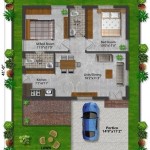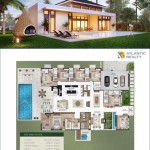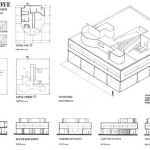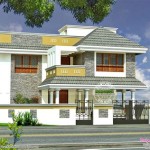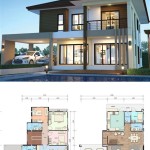Passive Solar House Plans for Cold Climates: Essential Considerations
Designing a passive solar house for a cold climate requires careful planning and consideration of key aspects. These plans harness the sun's energy to reduce heating costs and enhance indoor comfort. Here are some essential factors to keep in mind when creating house plans for cold climates:
Site Orientation and Glazing
Proper site orientation is crucial. Choose a site that allows the maximum amount of southern exposure for best solar gain. Large, south-facing windows allow sunlight to penetrate deeply into the house, providing warmth and natural light. Consider double- or triple-glazed windows with low U-values to minimize heat loss.
Thermal Mass
Thermal mass materials, such as concrete, brick, or stone, absorb and store the sun's heat during the day and release it gradually at night. This helps regulate indoor temperatures, reducing the need for additional heating. Incorporate these materials into floors, walls, and even furniture to maximize thermal storage.
Insulation
High levels of insulation are essential to minimize heat loss. Use insulation with a high R-value in walls, ceilings, and floors. Consider spray foam insulation for optimal air sealing and insulation performance. Pay attention to potential thermal bridges, such as around windows and doors, to prevent heat loss.
Airtightness
A well-sealed house envelope prevents air leakage, which can significantly reduce heating costs. Seal all penetrations, such as pipes, ducts, and electrical outlets, with caulk or expanding foam. Use weatherstripping around windows and doors to minimize drafts.
Ventilation and Shading
Proper ventilation is essential to maintain indoor air quality and prevent moisture buildup. Incorporate controlled ventilation systems or operable windows to allow fresh air exchange. Provide shading devices, such as overhangs or awnings, to prevent overheating during summer months.
Energy Modeling
Use energy modeling software to analyze the performance of your passive solar house design. This helps optimize the size and placement of windows, thermal mass, and insulation to maximize solar gain and minimize heat loss. It also provides insights into potential energy savings and helps verify compliance with building codes.
Additional Considerations for Cold Climates
- Consider preheating incoming air with a heat exchanger or earth tubes.
- Incorporate snow-melting systems around the house perimeter.
- Use passive solar greenhouses or sunspaces to capture additional solar energy.

Passive Design Strategies For Cold Climate

Passive Solar House Design Ecoliv

The Next Generation Of Passive Solar For Cold Climates Construction

Passive Solar House Design

Passive Solar House Design Homes Kept Warm By The Sun Ecohome

Using Thermal Mass In Passive Solar Design Cold Climate Housing Research Center

Does Passive Solar Design Actually Save Energy Fine Homebuilding

Passive House Design Comes Of Age Greenbuildingadvisor

Passive Solar House Design Bellingen Permaculture

Passive Solar Studio House Plan 1310 Affordable Adobe Houseplans


